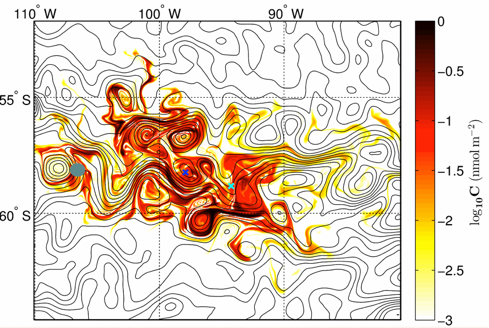The ocean is a dynamic and important part of Earth's climate system. Scientists across CCfCS study ocean circulation using a combination of observational, theoretical, and computational approaches.
CCfCS scientists use the full spectrum of theoretical, observational (e.g. ship-based, using autonomous floats), laboratory, and numerical modelling approaches to better understand the circulation and biogeochemistry of the world's oceans. Many scientists across CCfCS are involved in various aspects of oceanography and sea ice:
- British Antarctic Survey Oceans
- DAMTP Atmosphere-Ocean-Dynamics Group
- DAMTP Polar Ocean Physics Group
- DAMTP Institute of Theoretical Geophysics
Dynamics, transport, and mixing in the ocean
The ocean affects global and regional climate primarily by redistributing heat and carbon around the globe on timescales from hours to millennia and across spatial scales from centimetres (in the boundary layer) to the planetary scale. Processes on various scales (e.g. mixing, convection) can interact with one another, which makes understanding ocean circulation especially challenging.

Sea ice and its variability
Sea ice is a critical component of the climate system. The formation and melting of sea ice affects the exchange of heat and gases between the atmosphere and ocean, and it can have major impacts on the density structure and circulation of the ocean.


